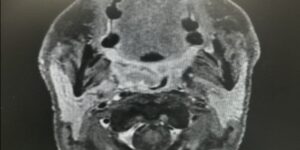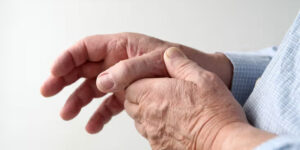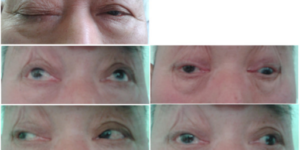Volume 1, Issue 5 | JSCMCRR
Arora V, Khatri A, Kumar G. Navigating methemoglobinemia: a sodium nitrite poisoning case report and therapeutic considerations. Series Clin Med Case Rep Rev. 2023;1(5):1-3.
Incidences of sodium nitrite poisoning have frequently increased in the last few years with the wide, easy availability of the drug and the increase in suicidal tendencies in the population. Sodium nitrite is widely used as a food preservative and in treating cyanide toxicity. It is a powerful oxidizing agent, which oxidizes hemoglobin to methemoglobin, reducing the oxygen-carrying capacity of erythrocytes and causing tissue hypoxia. Patients with sodium nitrite toxicity present to emergency with hypotension, cyanosis, hypoxia, altered consciousness, dysrhythmia, and cardiac arrest. We report a case of a suicide survivor who presented with an intentional fatal overdose of sodium nitrite in an 18-year-old female by drinking approximately one tablespoon of sodium nitrite in a suicidal attempt. Upon arrival at the emergency department (ED), the patient was hypotensive, cyanotic, and cyanosis non-responsive to oxygen therapy. Hospital professionals should consider sodium nitrite toxicity in patients with a suspected overdose who present with a cyanotic appearance and pulse oximetry that remains around 85% despite oxygen and dark brown blood seen on venipuncture. Prompt diagnosis is crucial to start early treatment.
Article DOI: 10.54178/2993-3579.v1i5a2017
Abstract
Full TextPDF Cite
Madnoorkar N, Vanere V, Raina A, et al. Primary small cell neuroendocrine carcinoma of the tonsil: a rare case report and review of literature. Series Clin Med Case Rep Rev. 2023;1(5):1-5.
Neuroendocrine tumors of the head and neck region are extremely infrequent. Small cell neuroendocrine carcinoma (NEC) of the tonsil is almost unheard of and carries a poor prognosis. There is no standard treatment protocol with regard to this tumor type. We present a 74-year-old male with complaints of odynophagia and swelling on the right side of the neck for one month. Physical examination showed a right neck level II lymph node with an ulceroproliferative mass involving the (R) tonsillar fossa, uvula, soft palate, and obstructing the oropharynx. MRI showed a right tonsillar mass measuring 3.4 × 3.3 × 1.4 cm with an ipsilateral level II lymph node measuring 2.7 × 1.9 cm. PET-CT scan showed a metabolically active right tonsillar lesion with a right level II lymph node. Histopathological examination revealed small cell NEC. On immunohistochemistry, tumor cells were strongly positive for PanCK, synaptophysin, chromogranin, CD56, and p16. Tumor cells were negative for CD45, CK7, CK20, and EBV-LMP. Ki-67 was 80%. The patient was treated with cisplatin and etoposide-based chemotherapy, and the tumor showed a very good response.
Article DOI: 10.54178/2993-3579.v1i5a2016
Thomas A, Shetty N, Edwin B. Study of menstrual irregularities in premenopausal women receiving chemotherapy for cancer. Series Clin Med Case Rep Rev. 2023;1(5):1-6.
The effect of chemotherapy on the menstrual cycle changes of patients who have undergone cancer treatment, mainly for breast cancer, was studied. For comparison, patients with nasopharyngeal, leukemia, buccal mucosa, and tongue cancers were also included in the study. The average age of the patients was 38. For breast cancer patients, the treatment was mostly a combination of doxorubicin, cyclophosphamide, and docetaxel or paclitaxel. Trastuzumab was also used in combination with other drugs for some patients. Appropriate treatments were given to patients with other cancers. This preliminary study was done with a group of 25 patients. Amenorrhea (stoppage of menses) was observed for about 75% of patients. For those patients for whom menses was restarted, it occurred after 1, 4, or 12 months after complete cessation of chemotherapy. No clear differentiation was observed for breast cancer vs. other cancer patients in the stoppage or restarting of menses with chemotherapy. Induction of amenorrhea after the chemotherapeutic intervention can be considered as a clear indication that the drugs are working as expected. Since the observation was made in patients of child-bearing age, the information could be used for counseling similar patients about the possibility of infertility and teratogenicity associated with chemotherapy. This preliminary study shows that the changes in menstrual characteristics upon chemotherapy in South Indian women are like those reported for the Western population. Induction of amenorrhea and resumption of menses after termination of the chemotherapy, the key parameters evaluated in this study, showed similar trends in both populations.
Article DOI: 10.54178/2993-3579.v1i5a2015
Abstract
Full TextPDF Cite
Anyfantopoulou E, Theofilou P. Exploring social support, pain self-efficacy and health beliefs in older adults with musculoskeletal disorders. Series Clin Med Case Rep Rev. 2023;1(5):1-8.
Background: During the last decades, many studies have explored social support, pain self-efficacy, and health beliefs in older adults with musculoskeletal disorders.
Aim: The purpose of the research is to investigate the beliefs of elderly people with musculoskeletal disorders regarding social support, self-efficacy in pain, and health locus of control.
Methods: The research was carried out based on 3 questionnaires. The first questionnaire involved the Multidimensional Scale of Perceived Social Support, the second involved the Pain Self Efficacy Questionnaire, and the third included the Multidimensional Health Locus of Control (MHLC) scale. The research was conducted from April–June 2023 among 106 elderly people, of which 32 (30.2%) were men and 74 (69.8%) were women, members of long-term care services and others who visited the Open Care Center of Patras.
Results: The mean age of the participants was 76.1 years and the majority were females, primary school graduates, and retired. Furthermore, most of them had moderate/mild manual labor, average financial status, and received medication for musculoskeletal problems. The results showed that there is a statistically significant positive correlation between pain self-efficacy and the support from the significant others (r = .370, p < .01), family support (r = .517, p < .01), overall social support (r = .435, p < .01), and financial status (r = .353, p < .01).
Conclusion: The research showed that social support is positively related to pain self-efficacy in the elderly with musculoskeletal diseases.
Article DOI: 10.54178/2993-3579.v1i5a2014
Lefe L, Vlastos DD, Theofilou P. Job burnout in telework of Greek workers: a quantitative study identifying the correlation of extroversion and introversion with job burnout. Series Clin Med Case Rep Rev. 2023;1(5):1-11.
The present study investigated how the consequences of telecommuting depend on the personality characteristics of employees. The hypothesis is that extroverted people will have more difficulties distancing themselves from the workplace and shifting work to home and thus high levels of burnout. It was also hypothesized that individuals with high levels of neuroticism would experience more burnout symptoms. The research involved 133 people who answered a questionnaire of demographic factors, the Eysenck personality questionnaire (EPQ) short form to determine extroversion and introversion and neuroticism, and the Maslach Burnout Inventory (MBI). The first hypothesis was not confirmed, as the results of the research showed that extroversion is negatively associated with burnout and therefore introversion is associated with more burnout symptoms. The second hypothesis was confirmed by demonstrating that neuroticism is positively correlated with burnout. Multiple regression showed extraversion as the most significant predictor of reduced burnout symptoms but showed no gender differences in burnout. In addition, it appeared that those with a higher academic education presented more emotional exhaustion and depersonalization which are indicators of burnout, but also more personal achievements which is an indicator of reduced burnout compared to those who were high school/IEK/KEK graduates. Even those with improved financial situation compared to 3 years ago presented more personal achievements.
Article DOI: 10.54178/2993-3579.v1i5a2013
Abstract
Full TextPDF Cite
Theofilou P. Perceived social support among patients and the contribution in the management of the chronic disease: a brief review. Series Clin Med Case Rep Rev. 2023;1(5):1-9.
The management of chronic disease is perhaps the main challenge for health professionals worldwide, who are called upon to deal with a variety of individual problems, also on a psychological and social level. The role of social support in the management of chronic disease seems to be important, as according to the international literature, it is positively related to physical and mental health. Many surveys have shown that social support is related to the reduction of depression and anxiety, the adoption of healthy health behaviors, commitment to therapeutic and dietary treatment, self-care, self-management, and a better quality of life and outcome of the disease in patients with renal disease, breast cancer, and musculoskeletal disorders. The purpose of this paper is, through the results of international research, to describe the concept and the forms of social support, as well as to investigate whether it has a positive or negative impact on chronic disease management. An additional goal is to identify the strategies and interventions with which health professionals can support the patient both emotionally and practically so that the patient is able to manage stress, disorders, and other problems more effectively created by his illness, as well as by the wider family environment.
Article DOI: 10.54178/2993-3579.v1i5a2012
Abstract
Full TextPDF Cite
Mishan Y, Davidovici M. Bilateral asymmetrical cyclic oculomotor palsy with spasm - a case report. Series Clin Med Case Rep Rev. 2023;1(5):1-2.
This is a unique case of bilateral asymmetrical cyclic oculomotor palsy with spasm (COPS). This is an unusual presentation of COPS, which is usually unilateral. The patient initially presented with cyclic upper lid ptosis, exotropia, hypotropia, and mydriasis, lasting approximately 1.5 minutes. The affected eye would then recover, and the other eye would undergo the same pattern of symptoms in keeping with COPS. The right eye has shown spontaneous improvement of symptoms over the 7 years of follow-up. The use of ptosis surgery, together with patching, seems to have been able to prevent the development of amblyopia in the left, worse-affected eye.
Article DOI: 10.54178/2993-3579.v1i5a2011







